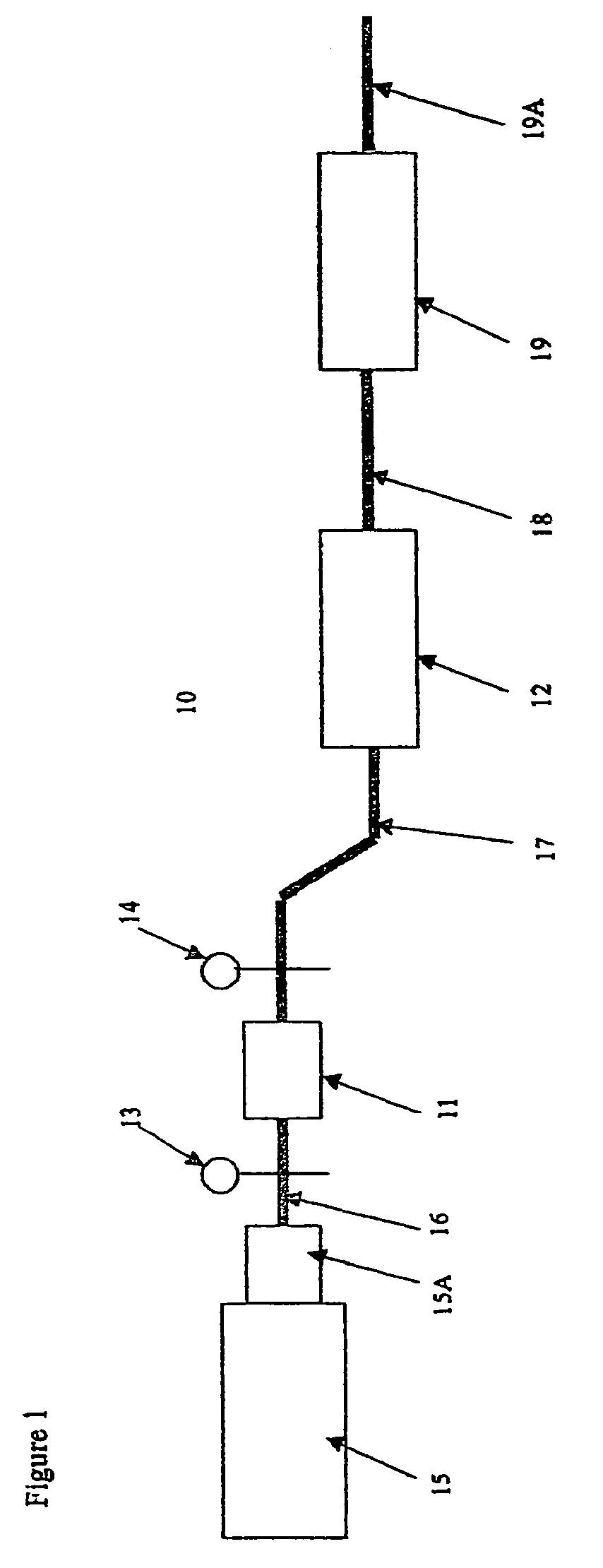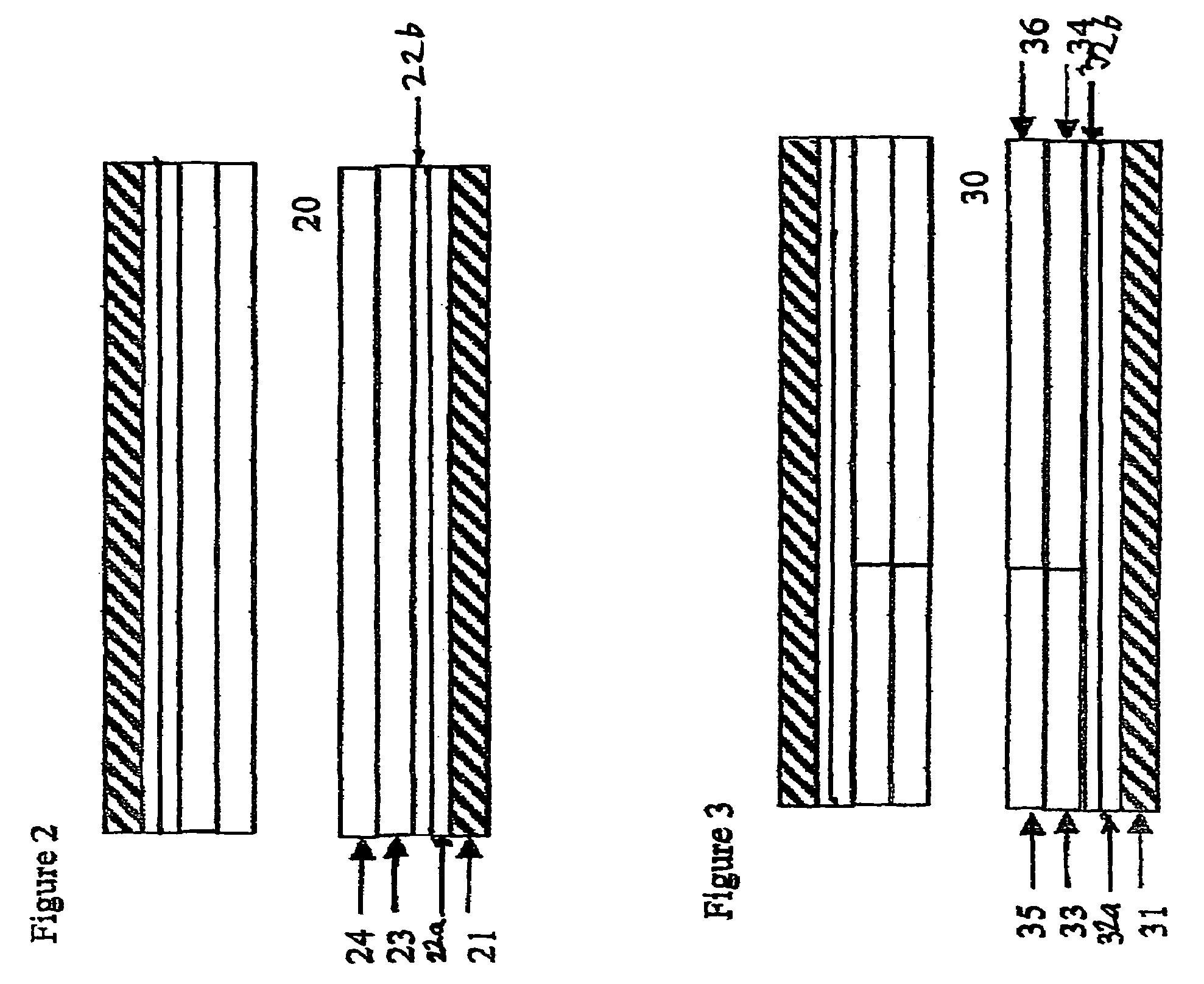Exhaust gas treatment catalyst
a technology of exhaust gas treatment and catalyst, which is applied in the direction of physical/chemical process catalysts, other chemical processes, separation processes, etc., can solve the problems of dampening out the normal air/fuel cycle used in engine controller strategies, and reducing the efficiency of the catalytic converter. , to achieve the effect of reducing the cost of catalyst, and improving the coating structur
- Summary
- Abstract
- Description
- Claims
- Application Information
AI Technical Summary
Benefits of technology
Problems solved by technology
Method used
Image
Examples
example 1
[0081]A catalyst was prepared in the following manner:
[0082]A cylindrical cordierite honeycomb substrate was used as the carrier. The carrier had a diameter of 4.16 inches, a length of 3.82 inches and a total volume of 52 in3. The total PGM content of the catalyst was 40 g / ft3. The PGM components consisted of platinum, palladium and rhodium in a ratio of 2:28:10, respectively.
[0083]A bottom (i.e., the first) layer was applied to the surface of the carrier by immersing the carrier in an approximately 35% solid content aqueous slurry containing 800 g gamma-alumina, 50 g alumina binder and 100 g of a composite of 92% zirconia and 8% lanthana. The thus-coated carrier was then calcined at 430° C. for 2 hours to obtain a dried washcoat at approximately 0.95 g / in3.
[0084]A middle (i.e., the second) layer in the form of an aqueous solution was then applied to the surface of the coated carrier. The middle layer consisted of an approximately 38% solid content, aqueous solution containing 70 g ...
example 2
[0087]Example 1 was repeated, except that the top layer and overcoat layer formulations were reversed. That is, the overcoat formulation recited in Example 1 was applied to the surface of the middle layer. After calcination, the top layer formulation of Example 1 was applied to the surface of the resultant carrier that was then calcined at 500° C. for 2 hours.
example 3
[0088]The catalysts of Examples 1 and 2 were evaluated on a 2.2-liter, 4-cylinder vehicle in accordance with Federal Test Protocol #75. Hydrocarbon and NOx emission (grams per mile) data were gathered for each catalyst for three phases: cold start, cruising and hot start. The results for each phase are set forth below in the following table.
PUM
| Property | Measurement | Unit |
|---|---|---|
| weight % | aaaaa | aaaaa |
| BET specific surface area | aaaaa | aaaaa |
| particle size | aaaaa | aaaaa |
Abstract
Description
Claims
Application Information
 Login to View More
Login to View More - R&D
- Intellectual Property
- Life Sciences
- Materials
- Tech Scout
- Unparalleled Data Quality
- Higher Quality Content
- 60% Fewer Hallucinations
Browse by: Latest US Patents, China's latest patents, Technical Efficacy Thesaurus, Application Domain, Technology Topic, Popular Technical Reports.
© 2025 PatSnap. All rights reserved.Legal|Privacy policy|Modern Slavery Act Transparency Statement|Sitemap|About US| Contact US: help@patsnap.com



